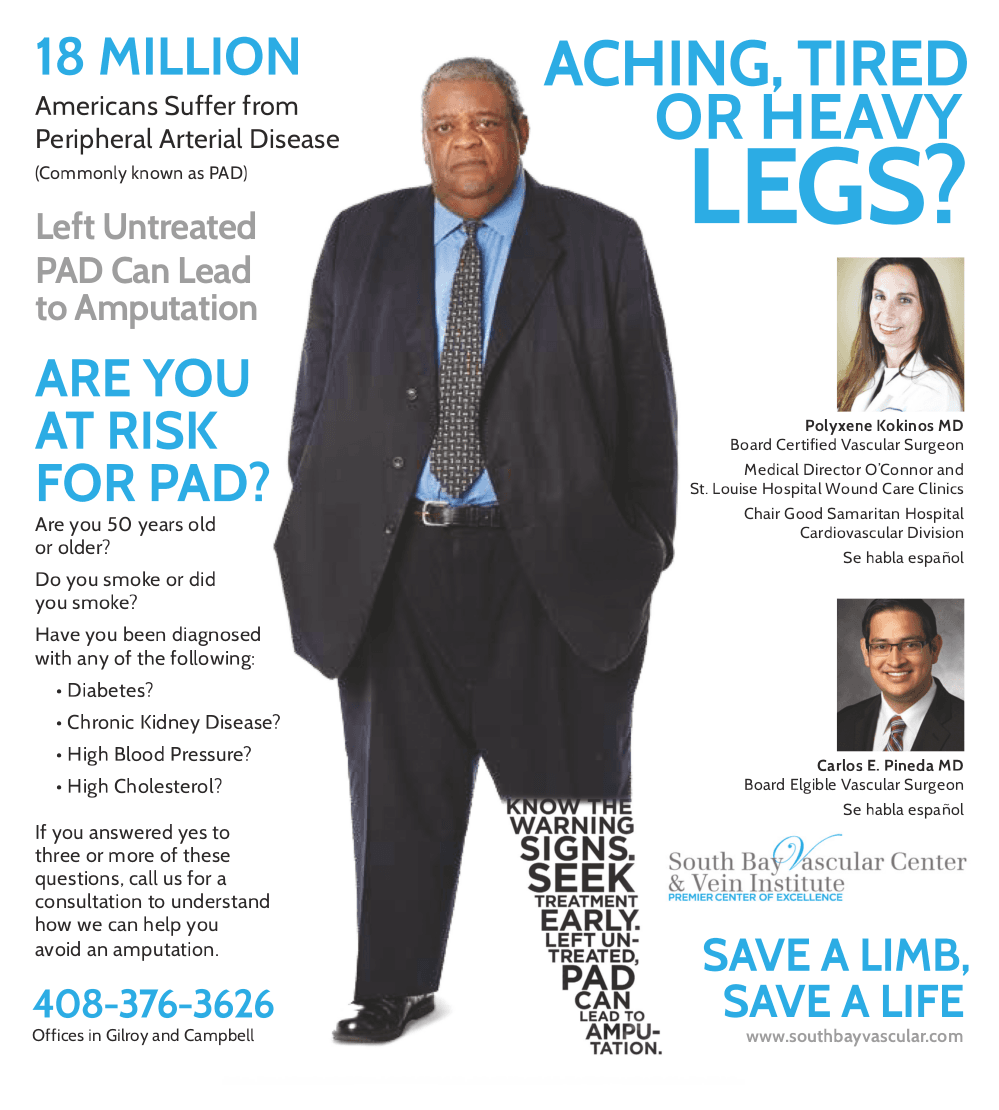What is Peripheral Arterial Disease?
Peripheral artery disease (PAD), also known as claudication, poor circulation, vascular disease, or hardening of arteries, is a chronic, life-threatening circulatory condition. PAD causes narrowing or blockage of the vessels that carry blood from the heart to the legs. The primary cause of PAD is atherosclerosis, or the buildup of plaque in the arteries. This occurs when arterial inflammation, cholesterol, calcium and scar tissue build up, forming plaque that clogs the arteries and slows blood flow to the legs. The more plaque that builds up on the inside walls of the blood vessels carrying blood from the heart to legs and arms, the more the arteries lose flexibility and narrow, putting patients at greater risk.
Risk factors for PAD
Smoking
High blood pressure
Diabetes,
High cholesterol
60+ years old.
PAD patients are at high risk of developing critical limb ischemia (CLI), a chronic condition that results in severe pain in the feet or toes, even while resting. Complications of poor circulation can include sores and wounds that won’t heal in the legs and feet. Left untreated, the complications of CLI could result in amputation of the affected limb. PAD patients are also at greater risk for heart attack and stroke. Studies have found that the total annual US costs for patients with PAD exceed $21 billion, including nearly $10 billion for hospitalizations. In Medicare alone, one study estimated spending on PAD accounted for more than 2% of all Medicare spending. PAD has been identified by the Institute of Medicine (IOM) as a priority area for comparative effectiveness research. One study suggested that endovascular therapy appears to be the least costly option in the short-run for patients with PAD.
Symptoms Blockages can restrict blood flow to the muscles, causing muscle cramps, tightness or weakness, especially during activity. In the early stages of PAD, patients may not experience any symptoms. If PAD is not treated, though, blockages may continue to grow and restrict, or even completely block, blood flow.
Common symptoms include:
Leg pain when walking
Muscle pain or cramping in legs and calf triggered by activity
Leg numbness or weakness
Coldness on lower leg or foot
Sores on toes, legs or feet that won’t heal
Change in color of legs
IF YOU OR ANYONE YOU KNOW SUFFERS FROM ANY OF THESE CONDITIONS WE CAN HELP! CALL US TODAY AT
408-376-3626 TO SCHEDULE AN APPOINTMENT.
